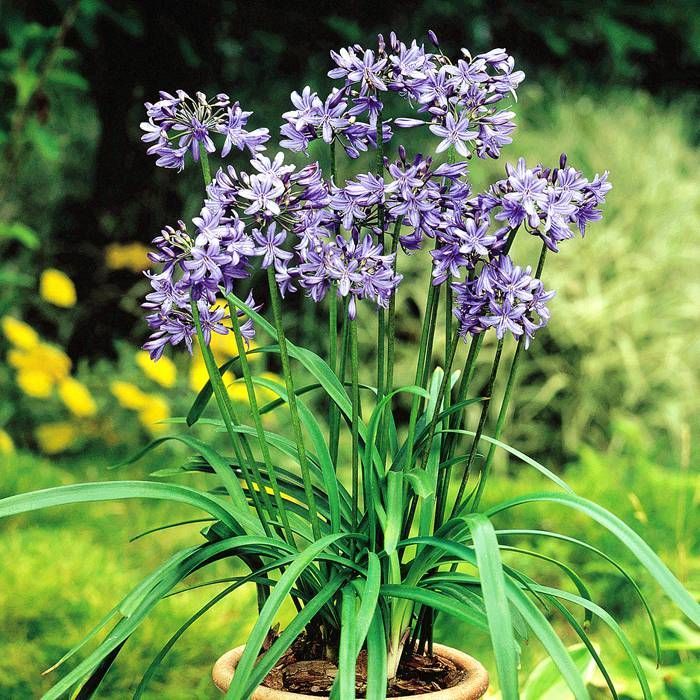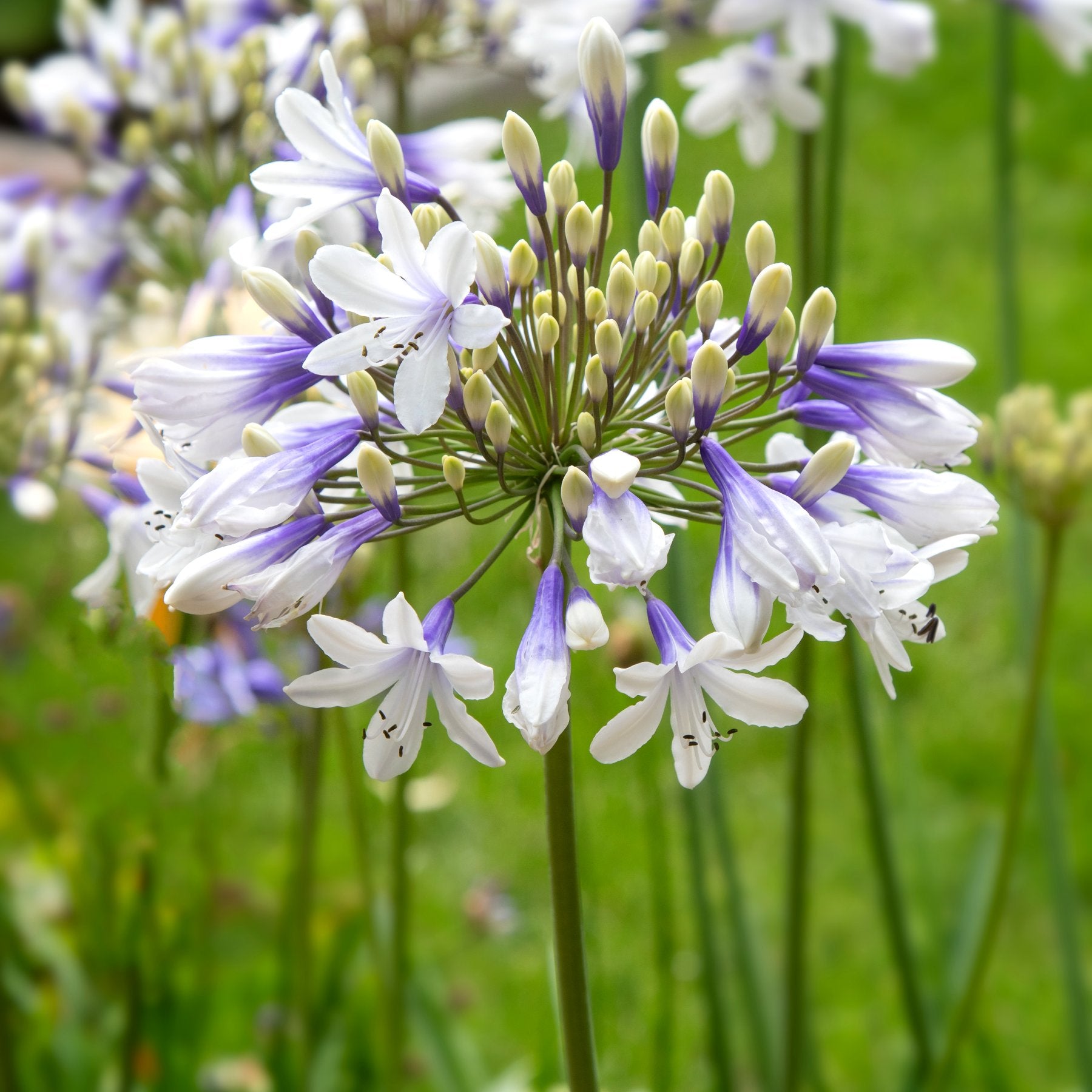Expanding Agapanthus: A Full Overview to Beautiful Blooms
Expanding Agapanthus: A Full Overview to Beautiful Blooms
Blog Article
Letting Loose the Secret to Successful Agapanthus Growing: Advice for a Flourishing Yard
In the realm of gardening, growing agapanthus effectively needs a tactical strategy that encompasses various facets of plant treatment. By recognizing the nuances of agapanthus growing, one can develop an environment where these plants flourish and grow perfectly.
Growing Agapanthus: Finest Practices
When growing Agapanthus, appropriate dirt preparation is vital for making certain successful development and growth of these attractive blossoms. Agapanthus, generally referred to as Lily of the Nile or African lily, grows in well-draining soil with a somewhat acidic to neutral pH degree - Agapanthus. Before planting, it is important to change heavy clay soils with organic matter such as garden compost or peat moss to boost water drainage and offer crucial nutrients for the plants
To plant Agapanthus, choose a location that receives complete sunlight to partial color, as this will promote healthy development and bountiful flowering. Dig a hole two times the size of the plant's origin round and put the Agapanthus at the exact same depth it was formerly expanding. Delicately backfill the opening with dirt, pushing down firmly to eliminate any kind of air pockets around the roots.
Water the newly planted Agapanthus thoroughly and remain to maintain the dirt uniformly damp, specifically during the plant's active growing period. Agapanthus. Using a well balanced fertilizer once a month can further sustain the plant's growth and blooming. By complying with these finest techniques for growing Agapanthus, you can develop a stunning screen of these exciting flowers in your garden
Perfect Dirt Issues for Agapanthus
For ideal development and blooming success of Agapanthus plants, making sure the soil conditions are suitable is essential. Agapanthus chooses soil that is rich in nutrients, so including a well balanced plant food throughout the growing period can promote healthy development and dynamic blossoms.

Watering and Fertilizing Tips
To make sure healthy development and dynamic flowers, appropriate watering and fertilizing methods are crucial for successful Agapanthus farming. Agapanthus plants benefit from normal watering, especially during the growing season. It is recommended to water deeply once a week, making sure the dirt is damp yet not soaked. During heat or in pots, even more regular watering may be required to stop the dirt from drying out entirely.
When it involves feeding Agapanthus, a well balanced plant food with equal parts nitrogen, phosphorus, and potassium can be applied in the spring look at here now to promote healthy and balanced growth and flowering. Slow-release fertilizers are excellent for giving nutrients gradually over an extensive duration. Stay clear of over-fertilizing, as this can bring about excessive vegetation development at the expense of flowers.
In addition, including natural matter like garden compost right into the soil can improve nutrient degrees and boost soil framework, aiding in the general health and wellness of the Agapanthus plants. By complying with these watering and feeding tips, garden enthusiasts can guarantee their Agapanthus plants flourish and generate sensational screens of blossoms.
Trimming and Deadheading Techniques
Correct trimming and deadheading strategies play a critical function in maintaining the health and appearances of Agapanthus plants, matching the necessary techniques of watering and feeding for successful growing. Pruning Agapanthus involves eliminating invested flower heads, yellowing webpage or dead leaves, and overall shaping of the plant to promote much better development. Deadheading, the process of removing faded blossoms, not only boosts the plant's appearance but additionally urges further flowering.
When deadheading Agapanthus, it is a good idea go to trim off the flower stem at the base utilizing sharp, clean shears. This procedure reroutes the plant's power from seed manufacturing back into origin and foliage growth, promoting a much healthier and much more durable plant. Routine deadheading can expand the flowering duration of Agapanthus and protect against self-seeding, which can bring about congestion.
In regards to trimming, Agapanthus normally take advantage of a light trim after flowering to clean the plant and motivate fresh growth. Reducing the spent blossom stems and eliminating any damaged or dead foliage helps keep the plant's vitality and total appearance. However, it is crucial to prevent reducing into the crown of the plant, as this can weaken its wellness.

Protecting Agapanthus From Vermins and Diseases
Applying effective pest and disease administration methods is crucial to guarding the health and wellness and vigor of Agapanthus plants in cultivation. One usual insect that affects Agapanthus is the Agapanthus borer, a caterpillar that passages into the plant, creating damage to the leaves and flowers.
In addition to parasites, Agapanthus are susceptible to illness such as root rot and fungal leaf places. By staying alert and dealing with bug and condition concerns quickly, garden enthusiasts can assist their Agapanthus thrive and thrive.

Final Thought
To conclude, effective cultivation of agapanthus calls for proper planting strategies, excellent soil problems, sufficient watering and fertilizing, routine pruning and deadheading, and security from pests and diseases. By adhering to these pointers and methods, gardeners can guarantee a prospering yard filled with stunning agapanthus blooms. Agapanthus. Remember to maintain regular care and focus to information to promote the health and wellness and longevity of these magnificent plants
When planting Agapanthus, proper dirt prep work is essential for guaranteeing successful development and development of these beautiful flowers.Water the freshly planted Agapanthus completely and continue to maintain the dirt equally moist, particularly throughout the plant's energetic expanding period.For ideal development and flowering success of Agapanthus plants, making certain the dirt conditions are excellent is critical. When planting or hair transplanting Agapanthus, guarantee the dirt is well-prepared to supply the needed foundation for the plants to establish themselves efficiently. One common pest that impacts Agapanthus is the Agapanthus borer, a caterpillar that passages right into the plant, causing damage to the flowers and leaves.
Report this page